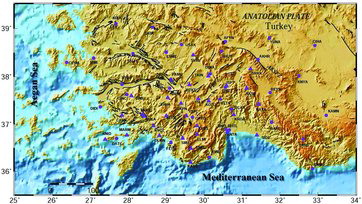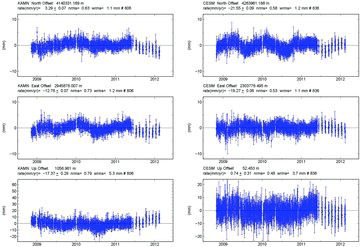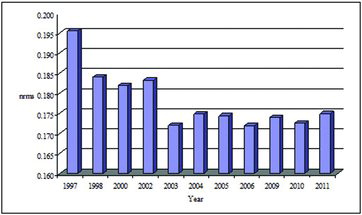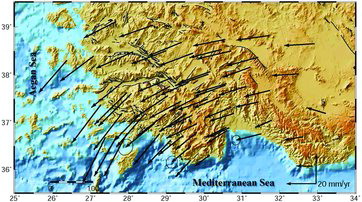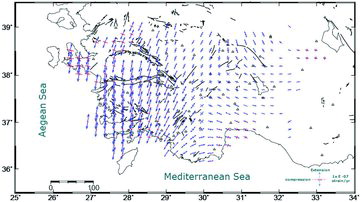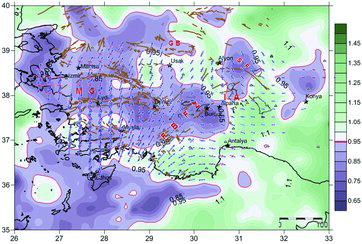Figures & data
Figure 1. Neotectonics map of Turkey and the study area (compiled from, Dewey et al. 1986; McClusky et al. Citation2000; ten Veen et al. Citation2009, and Hall et al. Citation2009). MG: Menderes graben system, CA: Cyprus arc, NAF: North Anatolia fault, EAF: East Anatolian fault, RB: Rhodes basin, PST: Pliny–Strabo trench, IA: Isparta Angle, FBFZ: Fethiye–Burdur fault zone, AKSFZ: Aksehir Simav fault zone.
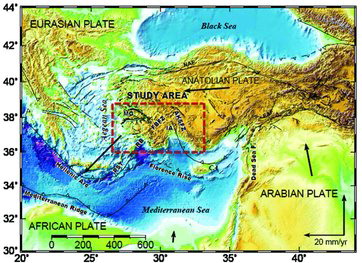
Table 1. The IGS stations used in the stabilization.
Figure 7. The location of earthquakes with a magnitude greater than 3.5 in southwest Anatolia between 1900 and 2012.
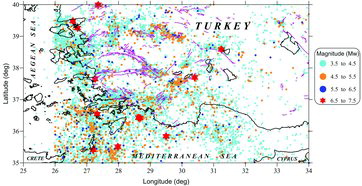
Figure 8. b value map including earthquakes that occurred at all levels of depth. The average b value is indicated with the red line.
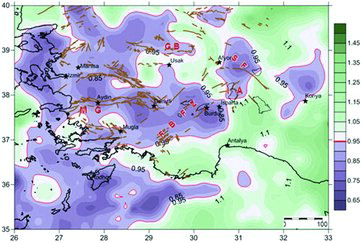
Figure 9. b value map including earthquakes that occurred at depths from 0 to 15 km. The average b value is indicated with the red line.
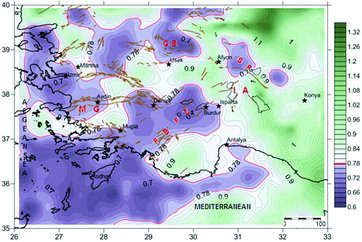
Figure 10. Occurrence likelihood (%) of a magnitude 6 and/or higher earthquake in the next 25 years.
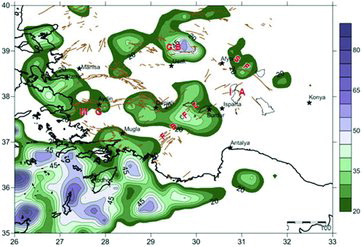
Table 2. Relation between strain rates, b parameter and earthquake occurrence likelihood.

